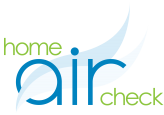
In today’s world, misinformation about mold is widespread. As a part of the Change the Air Foundation’s Summit 2024, Michael Pinto debunks some common misconceptions and myths surrounding mold and talks us through some of the facts you should know when it comes to mold. Here are some highlights of what he had to say.
“It Can’t Hurt Me, It’s Natural”
While many assume that mold, being natural, is harmless, this is not the case. Just as poison ivy and certain insects and animals can be harmful despite being part of nature, molds like aspergillus and stachybotrys (black mold) pose significant health risks when present indoors. Each situation warrants careful evaluation, as susceptibility to harm varies among individuals. For instance, while a bee sting may cause discomfort for many, it can be life-threatening for those allergic, necessitating immediate treatment with an epi-pen. Recognizing the dangers posed by certain molds, regardless of their natural origins, is crucial for maintaining a safe indoor environment.
“There Should Be No Mold Inside”
Some believe they should live in a completely mold-free environment. Achieving this is often unrealistic. Mold exists commonly in trace amounts, with numerous types of mold spores present. Virtually no indoor space is entirely mold-free. Let’s say for example there is extensive water damage inside of your home and that leads to mold growth on your walls, this is certainly something you would need to contact a remediation company for and have removed. Even in this case after remediation is completed your home might not be completely mold free but any that posed a danger to your immediate health and well-being would be gone.
“Only Black Mold Is Dangerous”
Although black mold is one of the most easily identifiable and known to be toxic, this is not the only type of mold that causes a potential risk to your health. There are over 100,000 different types of identified molds globally, and an estimated 500,000 in total. Out of all of these different types of spores, there are about 100 that are known to be noxious.
“Killing/Cleaning Mold is Enough, You Don’t Need To Physically Remove It”
Both live and dead mold can release harmful substances into the air, including volatile organic compounds (VOCs), leading to infections and various health issues. Symptoms such as fever, cough, and shortness of breath may indicate exposure to live mold. Even after cleaning and stain removal, residual allergens and microtoxins can persist, posing health risks like Organic Dust Toxic Syndrome. Only cleaning surfaces, without physically removing mold colonies, is insufficient. Industry standards emphasize complete removal. To fully mitigate mold’s adverse effects, physical removal is essential.
“Mold In Hidden Areas Do Not Need To Be Addressed.”
Even when mold isn’t visible to the naked eye, it can still be present and active. Hidden mold still produces VOCs, spores, fragments, and mycotoxins. Concealed mold, though unseen, isn’t fully contained. Believing that mold in unoccupied spaces doesn‘t warrant concern assumes that all emissions from the mold remain stationary. Yet, due to indoor air circulation and imperfect seals in buildings, chemicals and particulates from mold can migrate throughout the home over time. Dismissing hidden mold as insignificant risks underestimating its potential impact. Mold should never be disregarded with an “out of sight, out of mind” approach.
“Cleaning Up Mold Is Not Difficult, It’s a Simple DIY Project”
There are some that believe mold clean-up can be done easily by themselves. Unless your DIY remediation involves setting up airtight barriers, establishing negative pressure, using HEPA machines and vacuums, and meticulously addressing every inch of the surface area, this is something that is best left to a professional.
“Contents From Moldy Environments Can Never Be Cleaned”
When cleaning a mold compromised area it is important to get rid of all of the noxious mold that is found, this can sometimes mean items/contents of that area are thrown away. Segregation and decluttering are important first steps, just because something is a possession does not mean it should be saved. However, do not despair! If there are important items that hold sentimental or are of special personal value to you, they can be cleaned and restored. Buyer Beware – Be sure to do your research before choosing a contractor.
To learn more about mold myths and misconceptions watch Michael’s presentation HERE!
Image by brgfx on Freepik

